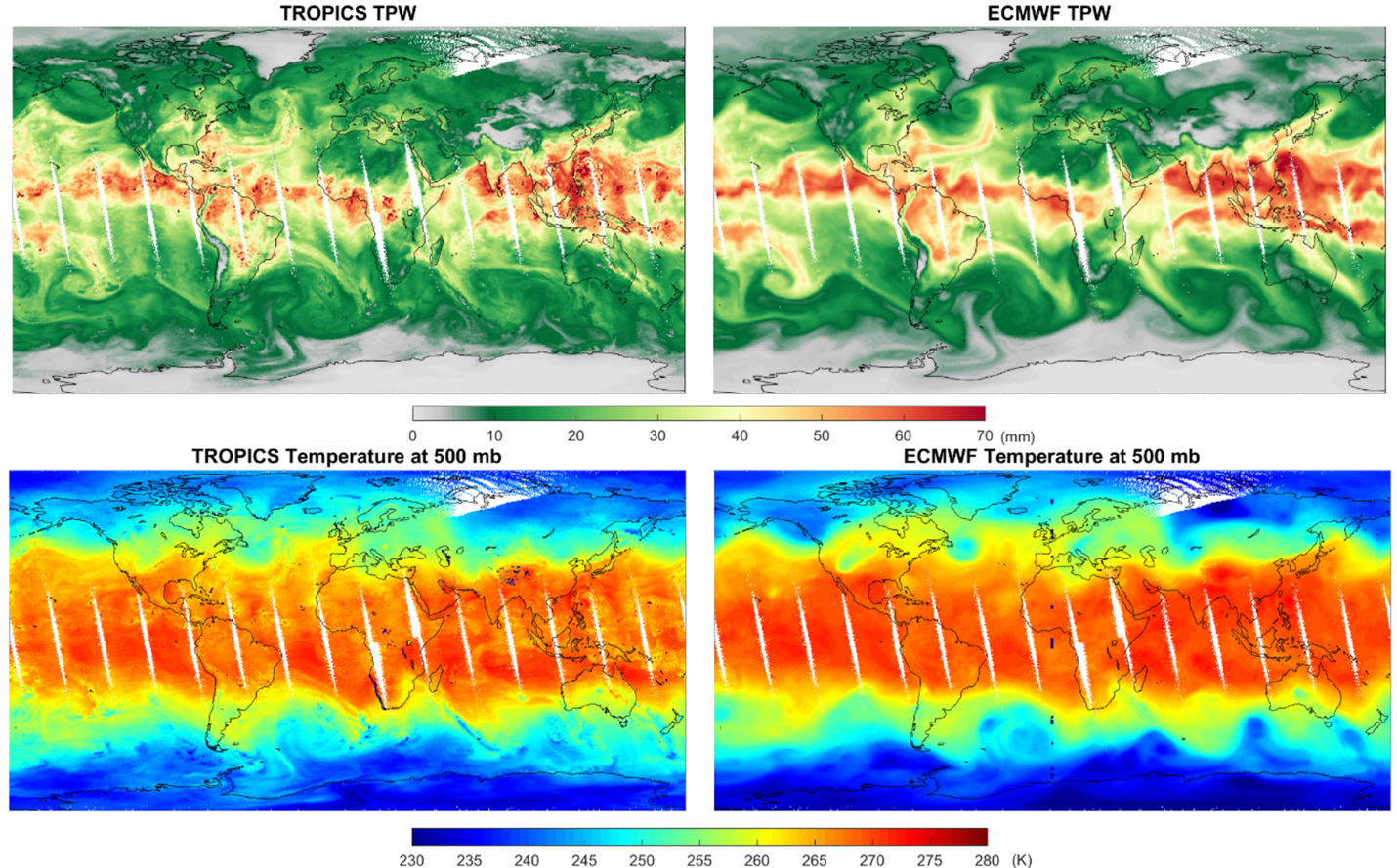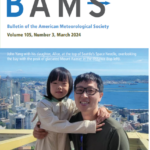ESSIC/CISESS scientists John Xun Yang, Yong-Keun Lee, and Christopher Grassotti are co-authors on a new paper titled “Atmospheric humidity and temperature sounding from the CubeSat TROPICS mission: Early performance evaluation with MiRS” in Remote Sensing of Environment.
The NASA TROPICS CubeSat mission aims to study tropical meteorology and storm systems. Its payload is the TROPICS Microwave Sounder (TMS), which is used for temperature and water vapor sounding. The Microwave Integrated Retrieval System (MiRS) developed at NOAA Center for Satellite Applications and Research (STAR) is used for TROPICS retrieval. MiRS is a state-of-the-art 1D variational (1DVAR) algorithm to retrieve atmospheric and surface information from satellite passive microwave measurements.
In the recent study, the MiRS team focused on atmospheric humidity and temperature retrievals of TROPICS. Atmospheric humidity and temperature sounding are indispensable in weather, climate and environmental science, contributing to over 60% in reducing weather forecast errors in terms of forecast sensitivity to observation impact. The humidity and temperature are associated with and affect a range of geophysical variables and processes such as precipitation, clouds and radiation as well as the monitoring and forecasting for natural disasters such as hurricanes, heat waves.
The quality of TROPICS retrievals is encouraging and comparable to traditional sounders such as ATMS. For example, the retrieved total precipitable water compared to ECMWF has a correlation coefficient of 0.955 and 0.985 for TROPICS and ATMS, respectively. Compared to traditional V- and G-band channels, TROPICS F-band and 205 GHz provide new information content with distinct sensitivity to moisture and hydrometeors. The successful MiRS extension paves the way to explore data from the forthcoming constellation.

Yang is an Assistant Research Scientist at ESSIC/CISESS. His research areas include Earth remote sensing, microwave radiometry, hardware development, calibration, and retrievals. He has been involved with a number of NASA/NOAA satellite missions, including the Aquarius, GPM, CYGNSS, JPSS, and TROPICS. He is a senior member of IEEE and an associate editor of IEEE Journal of Selected Topics in Applied Earth Observations and Remote Sensing (JSTARS).
Lee is an Associate Research Scientist in the Earth System Science Interdisciplinary Center of the University of Maryland, College Park. He received a B.S. and a M.S. in Atmospheric Science from Seoul National University, and received a Ph.D. in Atmospheric Science from Texas A&M University. He is working on the NOAA Microwave Integrated Retrieval System (MiRS) which is the official operational satellite microwave retrieval algorithm currently being run on data from more than 7 different polar and non-polar orbiting satellites. His interests include remote sensing and data assimilation.
Grassotti is a Senior Faculty Specialist at ESSIC/CISESS. He received a B.S. degree in earth and space science from the State University of New York at Stony Brook, Stony Brook, NY, USA, in 1982, tan M.S. degree in meteorology from the University of Wisconsin-Madison, Madison, WI, USA, in 1986, and an M.S. degree in viticulture and enology from AgroMontpellier, Montpellier, France, in 2007. From 1986 to 1991 and again from 1993 to 2005, he was a Research Associate, Senior Research Associate and Staff Scientist with Atmospheric and Environmental Research, Inc., Lexington, MA, USA. From 1991 to 1993, he was with the Atmospheric Environmental Service, Environment Canada, Dorval, QC, Canada. Since 2008, he has been with the National Oceanic and Atmospheric Administration, NOAA Center for Satellite Applications and Research, National Environmental Satellite, Data, and Information Service, College Park, MD, USA.
To access the article, click here: “Atmospheric humidity and temperature sounding from the CubeSat TROPICS mission: Early performance evaluation with MiRS”.






